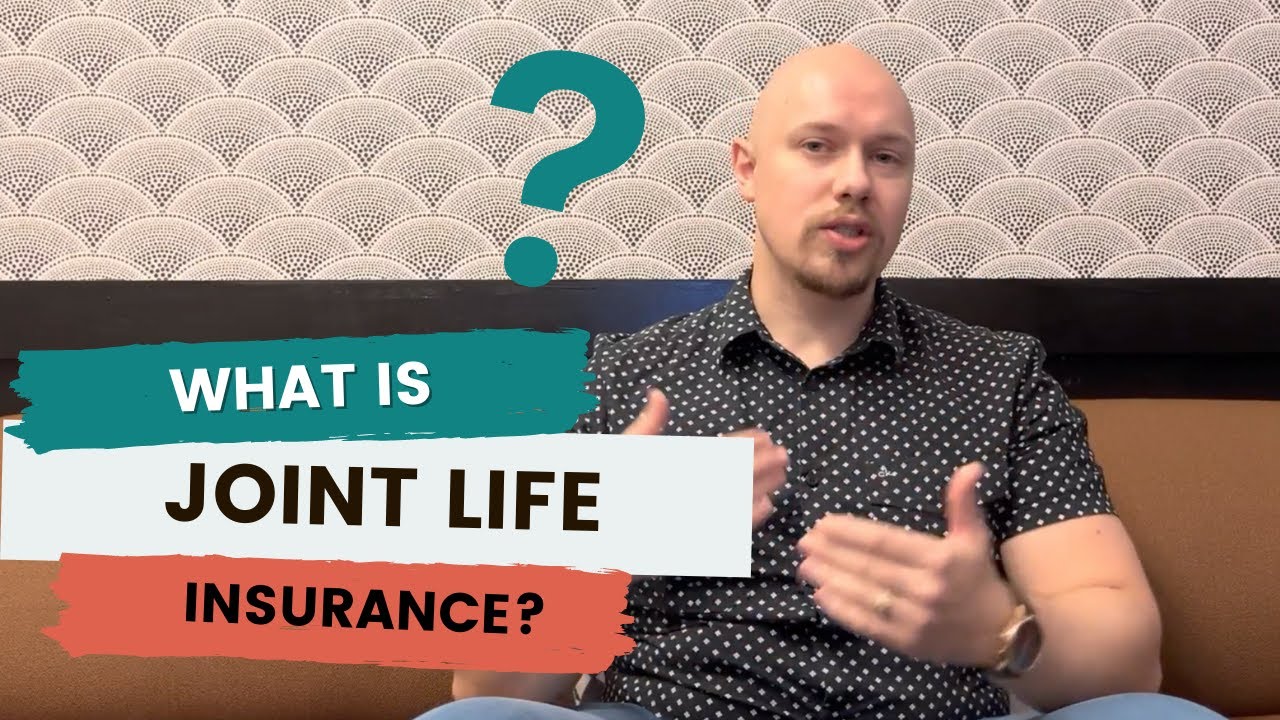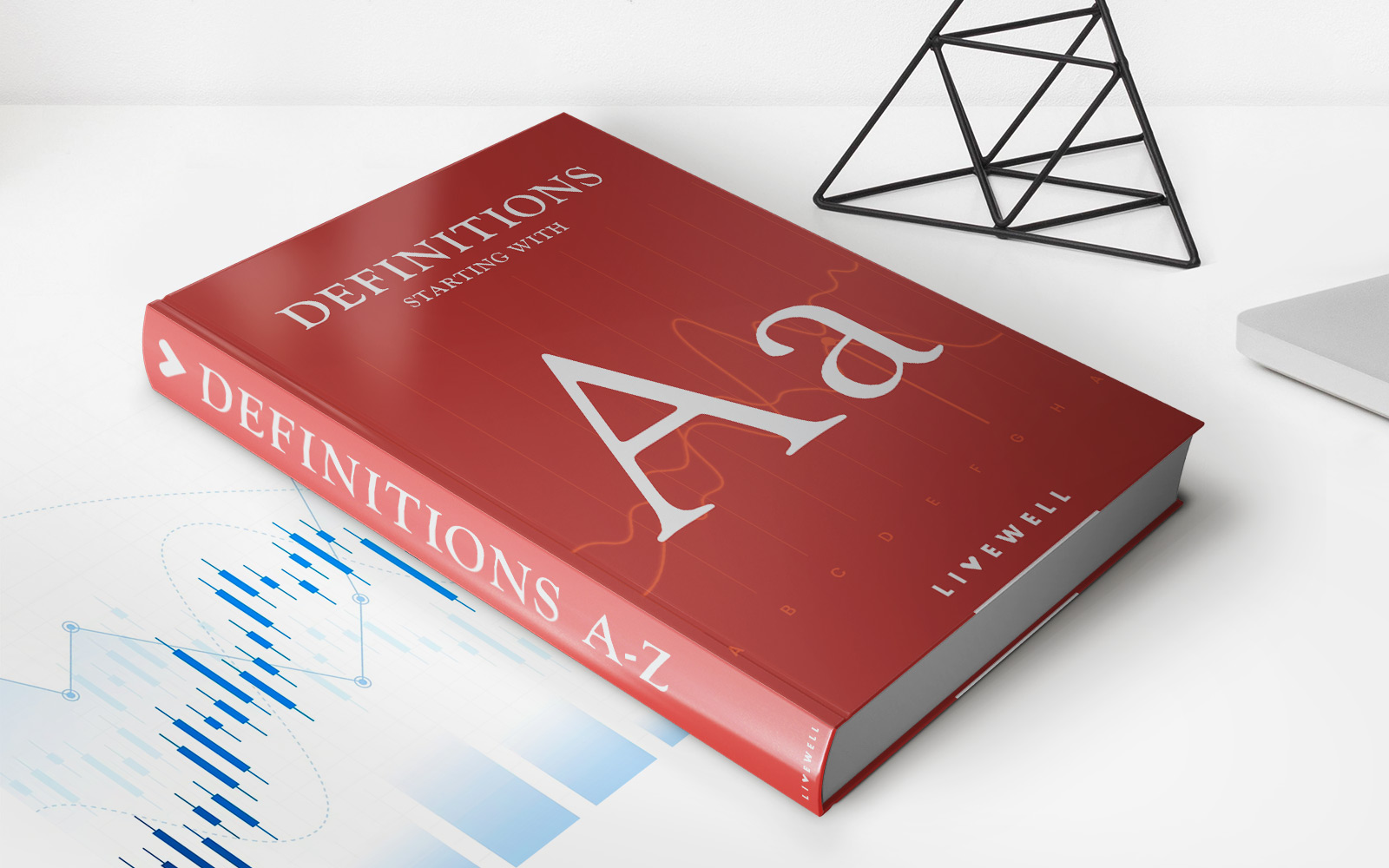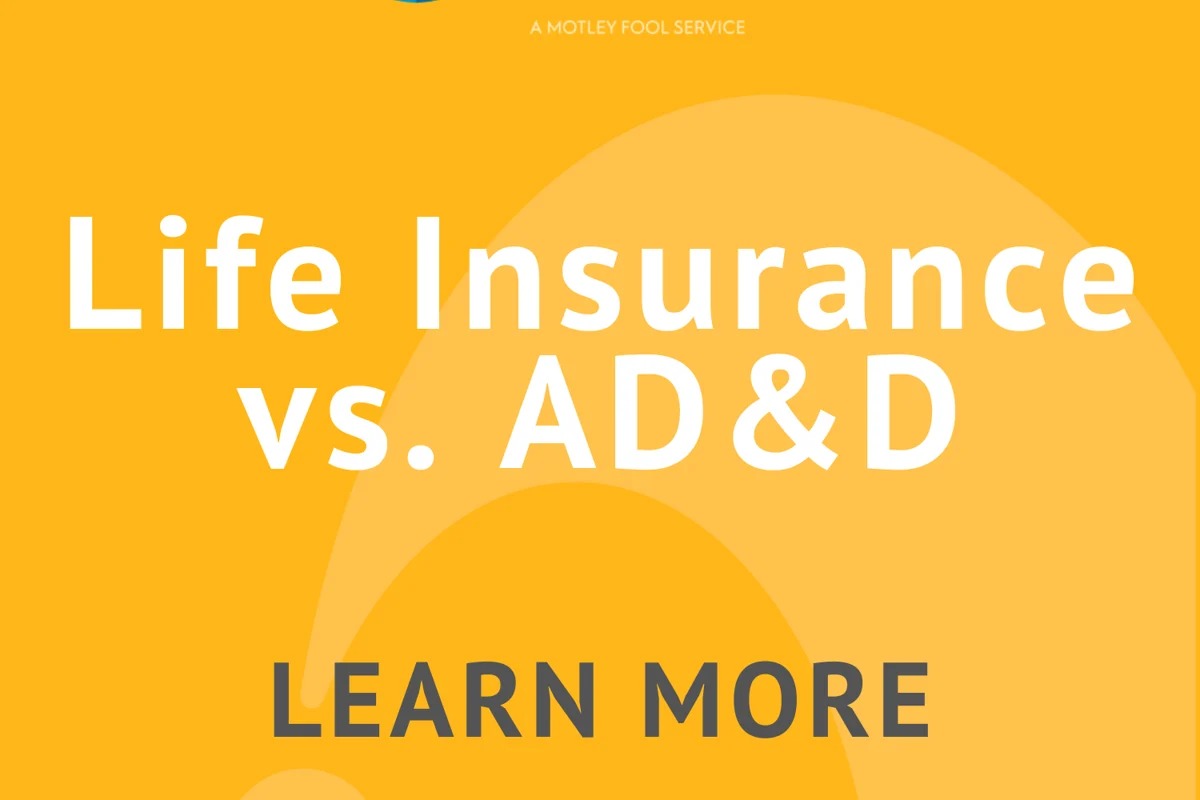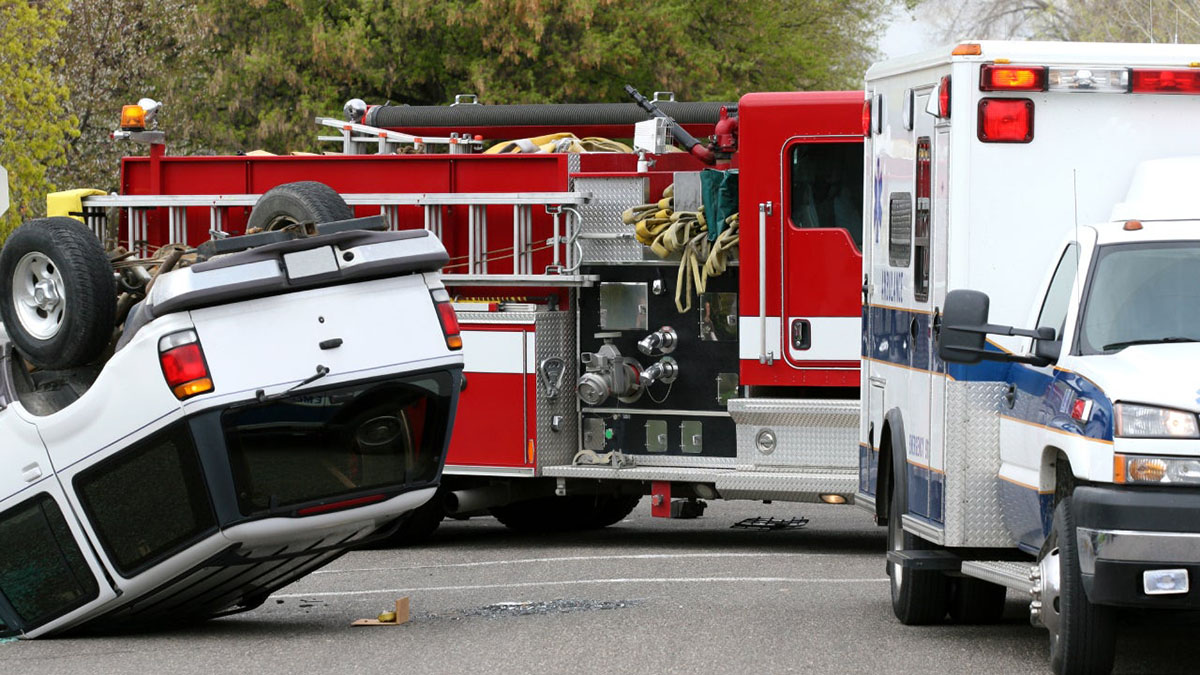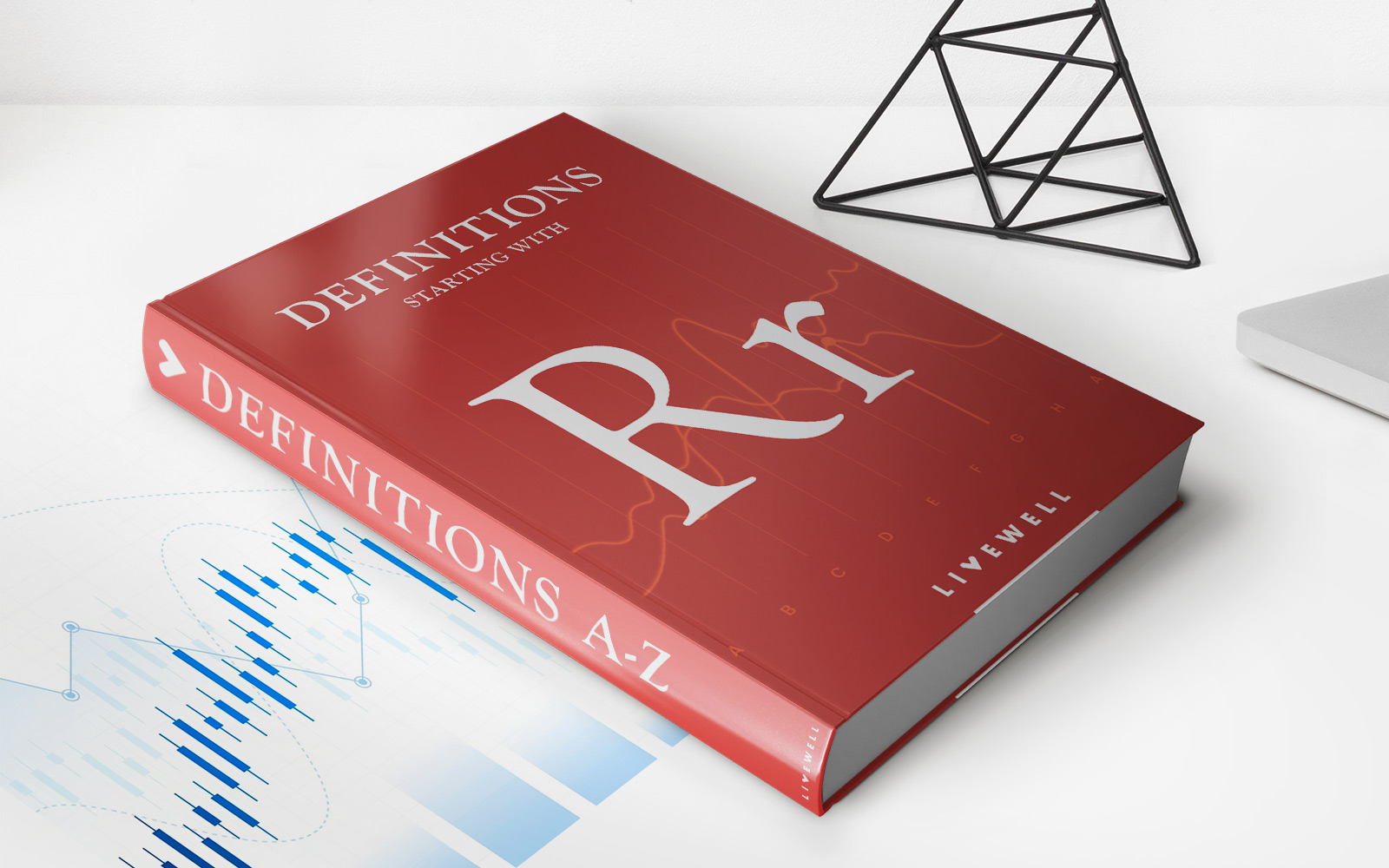Home>Finance>Accidental Death And Dismemberment Vs. Life Insurance


Finance
Accidental Death And Dismemberment Vs. Life Insurance
Published: October 16, 2023
Learn the key differences between accidental death and dismemberment insurance versus life insurance in the realm of finance. Make an informed decision to protect your future.
(Many of the links in this article redirect to a specific reviewed product. Your purchase of these products through affiliate links helps to generate commission for LiveWell, at no extra cost. Learn more)
Table of Contents
- Introduction
- Definition of Accidental Death and Dismemberment Insurance (AD&D)
- Definition of Life Insurance
- Coverage for Accidental Death and Dismemberment Insurance (AD&D)
- Coverage for Life Insurance
- Differences between Accidental Death and Dismemberment Insurance (AD&D) and Life Insurance
- Factors to Consider When Choosing between Accidental Death and Dismemberment Insurance (AD&D) and Life Insurance
- Conclusion
Introduction
When it comes to ensuring financial security and protecting loved ones, insurance plays a crucial role. Two common types of insurance that provide coverage for unexpected events are Accidental Death and Dismemberment Insurance (AD&D) and Life Insurance. While both offer benefits in case of unfortunate events, they differ in their coverage, terms, and suitability for different individuals.
Accidental Death and Dismemberment Insurance (AD&D) provides coverage specifically for accidental deaths or severe injuries resulting in dismemberment. This type of insurance is designed to provide financial assistance to policyholders or their beneficiaries in case of accidental death, loss of limbs, loss of sight, or other specific injuries resulting from accidents.
On the other hand, Life Insurance covers the policyholder’s life, providing a financial safety net for their beneficiaries in case of the insured’s death. This type of insurance offers a lump sum payout to the designated beneficiaries, easing financial burdens during a difficult time.
Understanding the coverage and differences between Accidental Death and Dismemberment Insurance (AD&D) and Life Insurance is essential for making informed decisions about personal insurance needs. This article will delve into the specifics of each type of insurance coverage, highlighting their differences and factors to consider when choosing between them.
Definition of Accidental Death and Dismemberment Insurance (AD&D)
Accidental Death and Dismemberment Insurance (AD&D) is a type of insurance that provides financial compensation in the event of accidental death or severe injuries resulting in dismemberment. It offers coverage specifically for accidents, as opposed to natural causes or illnesses.
In the unfortunate event of accidental death, AD&D insurance will typically pay a predetermined amount to the policyholder’s designated beneficiary. This payout can help cover funeral costs, outstanding debts, or provide financial support for the surviving family members.
AD&D insurance also covers severe injuries resulting in the loss of limbs, loss of sight, or other specific injuries outlined in the policy. The compensation amount for these injuries is typically a percentage of the total coverage amount, depending on the severity and impact on the insured’s daily life.
It’s important to note that AD&D insurance only covers accidents and accidental deaths. It does not provide coverage for deaths or injuries resulting from natural causes, illnesses, or suicides. Each policy may have specific terms and conditions, so it’s crucial to review the policy carefully and understand the coverage limitations.
AD&D insurance can be purchased as a standalone policy or as a rider added to an existing life insurance policy. Adding AD&D coverage to a life insurance policy ensures additional protection in case of accidental death or severe injuries.
When considering AD&D insurance, it’s essential to understand the various terms and conditions, including any exclusions or limitations in the coverage. Some policies may have restrictions on certain activities, such as high-risk sports or hobbies, and may not provide coverage in those situations. Reviewing the policy details and discussing any questions or concerns with the insurance provider is crucial for making an informed decision about AD&D insurance coverage.
Definition of Life Insurance
Life insurance is a type of insurance that provides financial protection to the policyholder’s beneficiaries in the event of the policyholder’s death. It offers a lump sum payment, known as the death benefit, to the designated beneficiaries. This payment can help cover funeral expenses, outstanding debts, and provide financial security for the policyholder’s loved ones.
Life insurance policies can be classified into two main types: term life insurance and permanent life insurance. Term life insurance provides coverage for a specific period, such as 10, 20, or 30 years. If the policyholder passes away during the term, the death benefit is paid out to the beneficiaries. Permanent life insurance, on the other hand, offers coverage for the entire lifetime of the insured individual, as long as the premiums are paid. This type of policy also accumulates cash value over time, which can be accessed or borrowed against if needed.
Life insurance policies require regular premium payments, usually monthly or annually, to keep the policy active. The premium amount is calculated based on several factors, including the policyholder’s age, health, occupation, and lifestyle habits. Younger and healthier individuals typically have lower premiums compared to older individuals or those with pre-existing medical conditions.
Life insurance offers financial security and peace of mind to the policyholder, knowing that their loved ones will be taken care of in the event of their death. It can also be used as an estate planning tool to ensure the smooth transfer of assets and provide for heirs or charitable organizations.
When considering life insurance, it’s important to assess personal financial needs and obligations. Factors such as outstanding debts, mortgage, education expenses, and the number of dependents should be taken into account to determine the appropriate coverage amount. Consulting with a financial advisor or insurance professional can help navigate the various options and find the right life insurance policy to meet specific needs and goals.
Coverage for Accidental Death and Dismemberment Insurance (AD&D)
Accidental Death and Dismemberment Insurance (AD&D) provides coverage for specific events resulting from accidents. The coverage typically includes accidental death and severe injuries that result in dismemberment, loss of sight, or other outlined injuries. Here are the key components of coverage for AD&D insurance:
- Accidental Death: In the event of accidental death, AD&D insurance will provide a lump sum payment to the designated beneficiary. This payout can help cover funeral expenses, outstanding debts, and provide financial support for the surviving family members.
- Dismemberment and Loss of Sight: AD&D insurance also covers severe injuries that lead to the loss of limbs or loss of sight. If the policyholder experiences such injuries as a result of an accident, they may receive a percentage of the total coverage amount based on the specific terms outlined in the policy. The amount varies depending on the severity of the injury and its impact on the insured’s daily life.
- Exclusions and Limitations: AD&D insurance policies may have exclusions or limitations on certain circumstances or activities. It’s important to review the policy details carefully to understand what is covered and what is not. For example, some policies may exclude coverage for injuries sustained while participating in high-risk sports or hazardous activities.
In addition to the standard coverage, some AD&D insurance policies offer additional benefits, such as:
- Common Carrier Accidental Death: This coverage provides additional benefits if the policyholder suffers an accidental death while traveling on public transportation, such as a plane, train, or bus.
- Education benefits: AD&D policies may offer education benefits for dependents, providing financial assistance for their education in the event of the policyholder’s accidental death.
- Rehabilitation and Disability Benefits: Some AD&D policies may provide coverage for rehabilitation expenses or disability benefits in case the insured individual becomes disabled due to an accident.
It’s important to carefully evaluate different AD&D insurance policies to determine the coverage that best suits individual needs. Understanding the specific terms, limitations, and additional benefits offered by the policy is essential in selecting the right AD&D insurance coverage.
Coverage for Life Insurance
Life insurance provides coverage for the policyholder’s beneficiaries in the event of the policyholder’s death. The coverage typically includes a lump sum payment, known as the death benefit, which is paid to the designated beneficiaries. Here are the key components of coverage for life insurance:
- Death Benefit: The primary coverage of life insurance is the death benefit, which provides a lump sum payment to the beneficiaries upon the policyholder’s death. This payout can help cover funeral expenses, outstanding debts, and provide financial security for the policyholder’s loved ones.
- Term or Permanent Coverage: Life insurance policies can be classified as either term life insurance or permanent life insurance. Term life insurance offers coverage for a specified period, such as 10, 20, or 30 years. If the policyholder passes away during the term, the death benefit is paid out to the beneficiaries. Permanent life insurance, on the other hand, provides coverage for the entire lifetime of the insured individual as long as the premiums are paid. It also accumulates cash value over time, which can be accessed or borrowed against if needed.
- Additional Riders: Life insurance policies may offer additional riders that provide extra coverage beyond the basic death benefit. These riders can include options such as accelerated death benefits, which allow the policyholder to access a portion of the death benefit if they are diagnosed with a terminal illness. Other riders may provide coverage for critical illnesses or potential long-term care expenses.
- Customizable Coverage Amount: The coverage amount for life insurance can be customized based on individual financial needs and obligations. Factors such as outstanding debts, mortgage, education expenses, and the number of dependents should be considered in determining the appropriate coverage amount.
Life insurance provides peace of mind, knowing that loved ones will be financially protected in the event of the policyholder’s death. It can replace lost income, cover expenses, and support the financial goals of the beneficiaries.
It’s important to carefully evaluate different life insurance policies to find coverage that aligns with individual needs and goals. Factors such as the coverage duration, premium affordability, policy flexibility, and additional benefits should be taken into consideration. Consulting with an insurance professional can help navigate the options and select the most suitable life insurance coverage.
Differences between Accidental Death and Dismemberment Insurance (AD&D) and Life Insurance
Accidental Death and Dismemberment Insurance (AD&D) and Life Insurance are two different types of insurance coverage that serve distinct purposes. Here are the key differences between AD&D insurance and Life Insurance:
- Scope of Coverage: AD&D insurance provides coverage specifically for accidental deaths and severe injuries resulting in dismemberment. It does not provide coverage for deaths caused by natural causes, illnesses, or suicides. Life insurance, on the other hand, covers death due to any cause, including accidents, illnesses, or natural causes.
- Payout Structure: AD&D insurance typically pays out a lump sum amount to the designated beneficiary in the event of an accidental death or severing of limbs. The payout amount may vary based on the policy provisions. Life insurance also pays out a lump sum amount, known as the death benefit, to the beneficiaries upon the policyholder’s death, regardless of the cause. The payout amount is determined by the coverage amount chosen at the time of policy purchase.
- Coverage Duration: AD&D insurance can be purchased as a standalone policy or as a rider added to an existing life insurance policy. It provides coverage for a specific period, usually one year, and needs to be renewed annually. Life insurance, on the other hand, offers coverage for a specific term (term life insurance) or for the entire lifetime (permanent life insurance) of the insured individual, as long as the premiums are paid.
- Premium Costs: Generally, AD&D insurance tends to have lower premium costs compared to life insurance. This is because AD&D insurance covers specific accidental events, while life insurance provides coverage for a broader range of risks. The premium for life insurance may be higher due to the larger coverage amount and longer coverage duration.
- Purpose: AD&D insurance is designed to provide financial assistance in case of accidental death or severe injuries resulting in dismemberment. It aims to alleviate the financial burdens faced by the insured or their beneficiaries due to an accident. Life insurance, on the other hand, serves the purpose of providing financial security to the policyholder’s beneficiaries in the event of the policyholder’s death, regardless of the cause.
When deciding between AD&D insurance and life insurance, it is important to consider individual needs and circumstances. AD&D insurance may be suitable for individuals who have higher risks of accidents or engage in high-risk activities. Life insurance, on the other hand, provides broader coverage and long-term financial protection for the policyholder’s loved ones.
It’s recommended to assess personal financial needs, consider the coverage desired, and consult with an insurance professional to determine the most appropriate insurance coverage for individual circumstances.
Factors to Consider When Choosing between Accidental Death and Dismemberment Insurance (AD&D) and Life Insurance
When deciding between Accidental Death and Dismemberment Insurance (AD&D) and Life Insurance, it’s important to consider various factors to ensure that the chosen insurance coverage aligns with individual needs and goals. Here are some key factors to consider:
- Coverage Needs: Assess your specific coverage needs and risks. If you engage in high-risk activities or have concerns about accidental death or severe injuries due to accidents, AD&D insurance may be worth considering. On the other hand, if you are looking for broader coverage that includes both accidental and non-accidental causes of death, life insurance would be more suitable.
- Financial Obligations: Evaluate your financial obligations and responsibilities. If you have outstanding debts or mortgage payments, life insurance can provide crucial financial support to your beneficiaries to cover these obligations. AD&D insurance, on the other hand, may provide a lump sum payment that can be used for immediate needs, such as funeral expenses, but may not offer the long-term financial support that life insurance provides.
- Premium Affordability: Consider the premium costs associated with AD&D insurance and life insurance. AD&D insurance generally has lower premiums compared to life insurance due to its limited coverage. Evaluate your budget and select an insurance option that aligns with your financial capabilities.
- Policy Duration: Determine the desired duration of coverage. AD&D insurance typically provides coverage for a year and needs to be renewed annually. Life insurance offers options for a specified term (term life insurance) or coverage for the entire lifetime of the insured individual (permanent life insurance). Choose a policy that suits your needs, whether you are looking for short-term coverage or lifelong protection.
- Additional Benefits: Consider any additional benefits offered by the insurance policies. AD&D insurance may have riders that provide coverage for specific situations, such as common carrier accidents or education benefits. Life insurance policies may offer riders such as accelerated death benefits or critical illness coverage. Assess these additional benefits and determine if they align with your specific needs and requirements.
It’s important to carefully review the terms, conditions, and coverage limitations of both AD&D insurance and life insurance policies. Consider consulting with an insurance professional who can provide guidance and help you understand the specific features, benefits, and limitations of each type of insurance.
Ultimately, the decision to choose between AD&D insurance and life insurance depends on your personal circumstances, risk tolerance, and desired coverage. Assess your needs, compare policies, and make an informed decision that provides you and your loved ones with the necessary financial protection.
Conclusion
Accidental Death and Dismemberment Insurance (AD&D) and Life Insurance are both important forms of insurance that offer financial protection in different ways. AD&D insurance provides coverage specifically for accidental death and severe injuries resulting in dismemberment, while life insurance provides broader coverage for death due to any cause.
When choosing between AD&D insurance and life insurance, it’s crucial to consider factors such as coverage needs, financial obligations, premium affordability, policy duration, and additional benefits. Assessing individual risks, evaluating budgetary constraints, and understanding the desired duration of coverage are key steps in making an informed decision.
AD&D insurance may be suitable for individuals with higher risks of accidents or who engage in high-risk activities. It can offer a lump sum payment to help cover immediate expenses in the event of accidental death or severe injuries. Life insurance, on the other hand, provides long-term financial security for the policyholder’s beneficiaries, covering both accidental and non-accidental causes of death.
Consulting with an insurance professional is highly recommended to navigate the options and determine the most appropriate insurance coverage. They can help assess individual needs, explain policy features, and guide individuals in selecting the right coverage that aligns with their financial goals and obligations.
Ultimately, the decision to choose between AD&D insurance and life insurance depends on individual circumstances and preferences. The goal is to ensure that loved ones are protected and financially secure during challenging times. By considering all relevant factors and understanding the differences between these types of insurance, individuals can make an informed choice that provides peace of mind and adequate financial protection.

